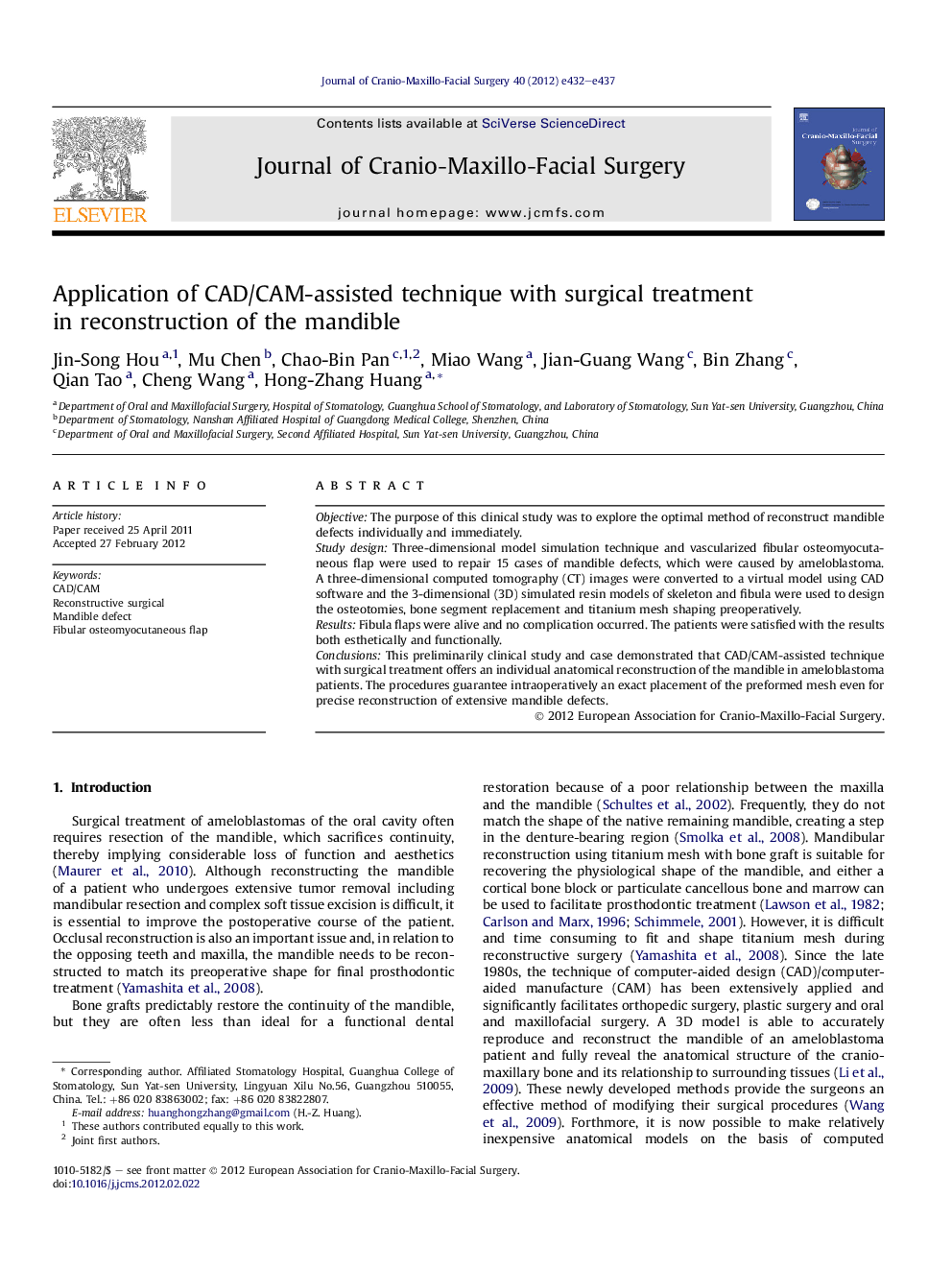| Article ID | Journal | Published Year | Pages | File Type |
|---|---|---|---|---|
| 3143429 | Journal of Cranio-Maxillofacial Surgery | 2012 | 6 Pages |
ObjectiveThe purpose of this clinical study was to explore the optimal method of reconstruct mandible defects individually and immediately.Study designThree-dimensional model simulation technique and vascularized fibular osteomyocutaneous flap were used to repair 15 cases of mandible defects, which were caused by ameloblastoma. A three-dimensional computed tomography (CT) images were converted to a virtual model using CAD software and the 3-dimensional (3D) simulated resin models of skeleton and fibula were used to design the osteotomies, bone segment replacement and titanium mesh shaping preoperatively.ResultsFibula flaps were alive and no complication occurred. The patients were satisfied with the results both esthetically and functionally.ConclusionsThis preliminarily clinical study and case demonstrated that CAD/CAM-assisted technique with surgical treatment offers an individual anatomical reconstruction of the mandible in ameloblastoma patients. The procedures guarantee intraoperatively an exact placement of the preformed mesh even for precise reconstruction of extensive mandible defects.
